Foundational knowledge of Hydroponics will let you know that it is a way of plants without the aid of soil and by only using nutrient infused water that will allow the plants to flourish and grow. There are a variety of Hydroponics set – ups that you can choose from to grow your plants as per your feasibility. This article discusses one of the main aspects of a hydroponics set – up that is essential in the growth of the plants and that is, hydroponic growing medium.
What is a growing medium?
In a Hydroponics set – up the plants are placed in tiny containers under which the nutrient infused water will flow to provide the plants with the required nutrients. But what is present between the plant and the water is a medium that is used in place of the soil i.e. a growing medium. This medium can be any inert material that will help in holding the roots of the plant and aiding in keeping the plant upright.
What does the growing medium do?
So, like stated before, a growing medium is a stand – in for soil whose primary function is to hold the roots in place so that the plant above is supported because of which it will be able to stand upright.
This medium can be of any inert material which means that it should be such that it won’t fall apart or decay quickly for the benefit of the plant. The medium is generally porous which helps it holding the moisture and the oxygen that the water will provide the plant with for use by the plant for a while. There are materials that are not porous too but with them the plant has to receive water more frequently so that its roots won’t dry out as its medium cannot hold any moisture.
Keep in mind however that the growing medium is there solely to provide support to the plant roots and to hold the moisture and nutrients provided by the water. It has no independent role of its own in the growing of the plant and does not contain any aspect that will help in the plant’s cultivation.
What are the different Hydroponic growing mediums?
There is quite a long list of media that you can choose from to insert as a medium for your Hydroponic plants. Go ahead and read up.
Rice Hulls
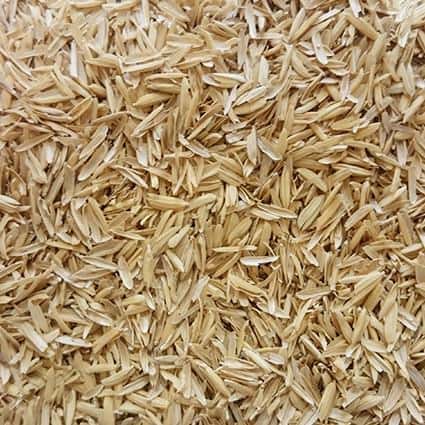
Because rice hulls are plant material, you would think they would break down easily. But that’s not true. They are a very suitable medium to use. Older rice hulls are used instead of fresh ones because the fresh ones may be contaminated by fungal spores, rice, bacteria, weed seeds or decaying bugs which may prove harmful to your plants.
Shelling the rice and then drying the hulls will allow for the killing of any bacteria or microorganisms or spores that they may have on them. This medium is also often used as a part of a media mix so as to combine two mediums for a greater benefit to the plant. Hydroponic plants mostly prefer pH levels ranging between 5 and 7 and the pH level of various rice hulls falls between 5.7 and 6.5. A few varieties of rice hulls consist of a high level of manganese. Its toxicity can however be avoided if the pH level falls above 5.
Water Absorbent Polymers

Water absorbent polymers are not new to the gardening world. They are commonly used to retain soil moisture and by florists. The crystals absorb water and grow in size. Depending upon the size of the crystal, the water absorbed is proportional.
These polymers can be used more than once. In Hydroponics, the large crystals are used as they won’t constrict the plant of any oxygen and air. They are often mixed with river rocks to help increase the number of air pockets for the benefit of the plant. This medium allows for a very simplistic Hydroponic set – up that is inexpensive and easy to set up. They are not a popular medium in Hydroponics, but they have their value and make your work much easier.
Pine Bark
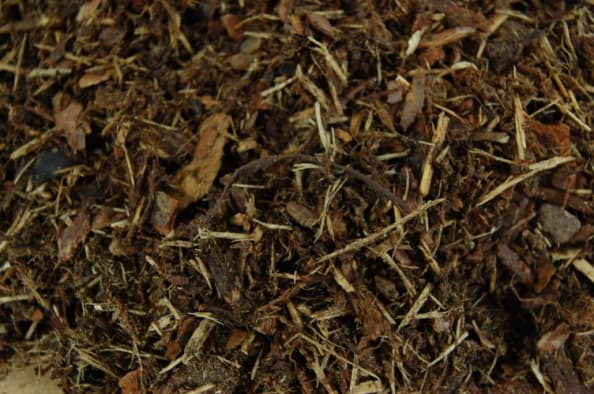
Pine bark that has been composted and aged makes for a great medium and is one of the first mediums to come up. It is preferred mostly over other tree barks because of its slow decomposition power and its low organic acids that wouldn’t get into the nutrient solution.
If you use fresh bark you would have to add extra nitrogen to the nutrient mix because fresh bark absorbs high nitrogen and decomposes quickly. Composted pine bark will have already come in contact with nitrogen during the composting process which helps it to break down, so you wouldn’t have o worry about issues with nitrogen in composted bark. It is easy to find in places that sell various types of mulch.
River Rock

River rocks are commonly found in many stores; they are available in a variety of sizes and are inexpensive. These rocks have smooth edges. In place of them, you can also use the rocks from your backyard but be sure to sanitize it first.
This may be quite a heavy medium to use for your plants. It is hard for rocks to hold moisture for the plants. It’s easier for them to hold oxygen because of their pores. You will have to increase your watering to make sure that the roots don’t dry out. Adding another medium may help with the lack of moisture retaining. It is however, a very good drainer and will avoid the submerging of the plant roots.
Floral Foam
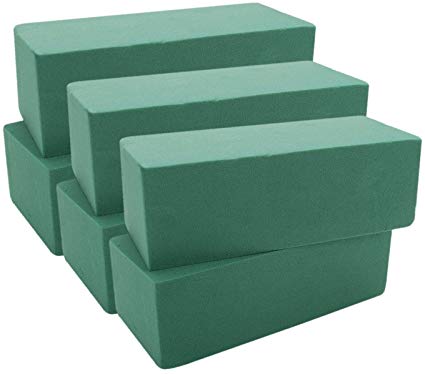
The size of the cell is large in floral foam. If you use floral foam, you may come across some issues depending upon the kind of Hydroponics system you use it in. There may be a chance that it can easily break down due to its texture and that will have your water filled with floating particles. There also may be a water clog which you may have to keep checking on. It is good water absorbent so make sure it is not directly in contact with the water.
Vermiculite

This medium, when exposed to high levels of heat, expands. It has a high capacity of carbon exchange which allows it to store nutrients in it for the plants to use later. It is of light weight because of which it floats. There is a variety of vermiculite, all for a different kind of use. So make sure to buy the one meant for the purpose of horticulture. It is a good medium for your hydroponic plants.
Coco Chips

They are coconut husks that are cut up in small and uniform sizes. These look like wood chips of a smaller size. Its size allows for air pockets which aids in good air circulation in the roots. They are of a size that will allow them to stay in the basket of the plants instead of falling through. The chips, when soaked in water, will expand in size to one atleast six times larger. They are also used as a mulching agent.
Grow Rock (Hydrocorn)
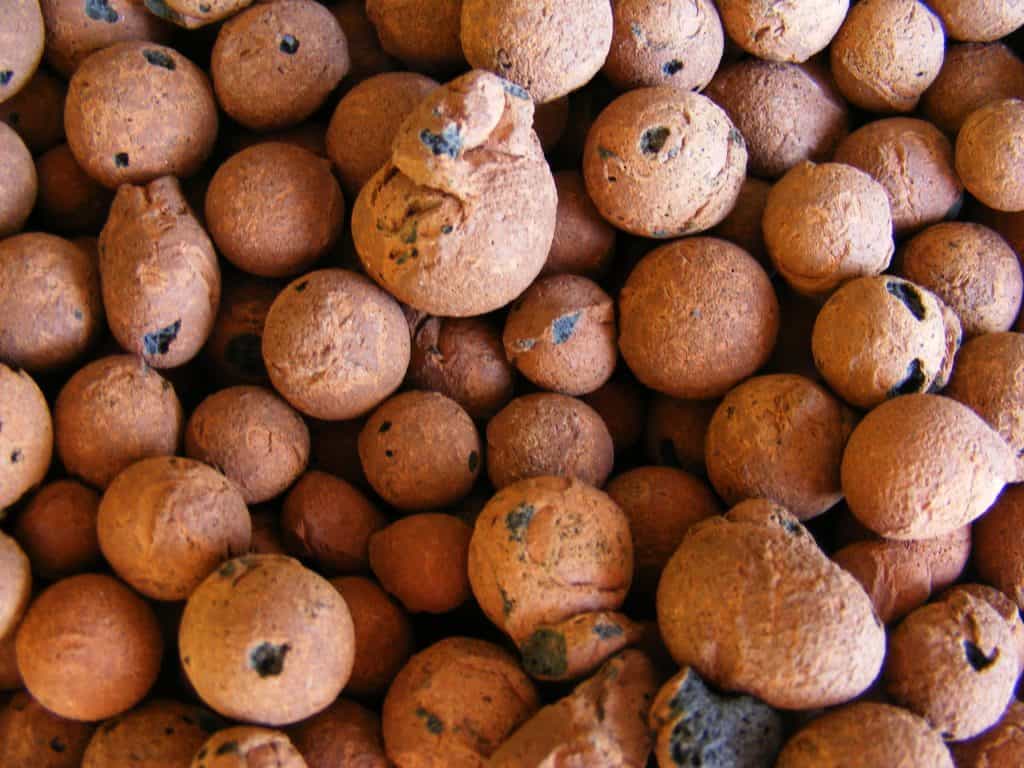
It is a Lightweight Expanded Clay Aggregate (L. E. C. A.) which means that it is clay that has been super – fired so as to create a porous texture. It is lightweight, yes, but also heavy enough to be able to support your plants. Here are its amazing pros: it is non – degradable and sterile, it can retain moisture and has a pH level that is neutral and is a good medium to transport nutrients to the plant. And on top of all, it is one that can be cleaned, and after sterilization, can be used again. However, this process can be quite long and tiring. It is an efficient and also a popular medium for a good reason.
Sand

It is a more common growing medium than you think. Sand is just rocks, but smaller and this allows it to hold moisture for longer. Mixing it with other mediums is common and allows for moisture retaining and aeration. It is recommended that you use sand of a larger grain texture so as to increase chances of aeration due to their bigger air pockets. Sanitising the sand by washing it before use is necessary for obvious reasons.
However, sand is a pretty heavy medium to use and can become quite heavy for you to manage. So make sure to figure out the location of the plants beforehand so you won’t have to move them later on.
Polyurethane Foam
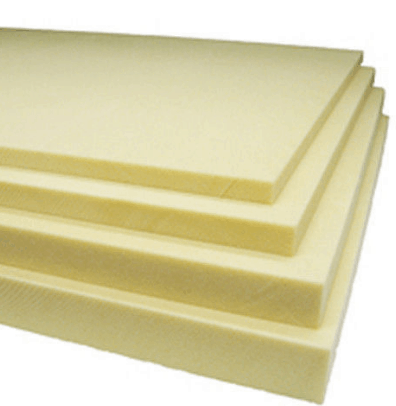
You won’t find it to be a common growing medium but has proven to produce positive results in the past. It is quite cheap and easily available in stores. They come in rolls or as sheets and you will have to cut them into cubes by yourself in a size which is in accordance t o your plant holders. The reason they don’t make bad growing media is because they have air holes that allow for adequate aeration and their texture allows for them to hold moisture. They don’t break down easily; though they don’t hold on for too long, it is still long enough for poly foam to be termed as a successful hydroponic growing medium.
Pine Shavings
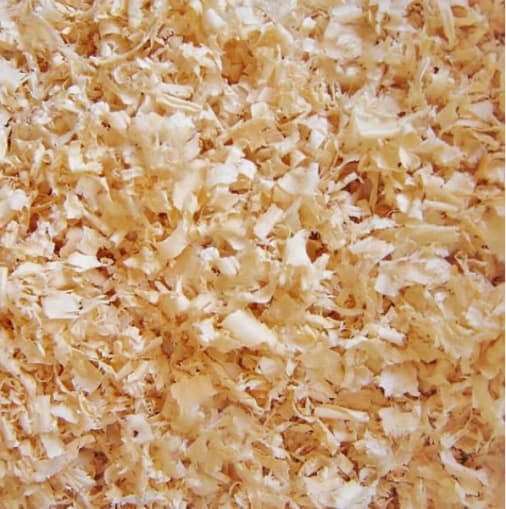
They are largely commercially used and are quite inexpensive. Use the one created out of dried kiln wood and see to it that it does not have chemical fungicides. The kiln drying helps in drying out all the sap that was present in the bark that may harm the plants.
Organic pine shavings are more than recommended for use. Using larger pine shavings will allow larger air pockets between the particles which will mean more aeration for your roots. Because they are a by – product of wood, they have a capacity to easily absorb water. This may also result in logging of the water. This can be avoided by having good drainage for your plant containers.
Growstone

They are produced from processed recycled glass. They share similarities with grow rocks, but are instead made up of shaped marbles and clay. They are porous, reusable, of light weight and are unevenly shaped. They have good capabilities of providing aeration and retaining moisture for the sake of the roots.
Make sure to have a good drainage for your plant holes while using grow stones as they may wick the water to the top. Having the top wet most of the time may lead to issues such as stem rot. Their texture is quite crumbly and not sharp which means that you will not accidentally hurt yourself.
Oasis Cubes

While its properties may be similar to that of rockwool, its texture shares similarities with that of floral foam. It has many cells to hold the plants in, and each cell has an ability to hold air and moisture. Since they are open cells, the plants have a freedom to grow as far and long. Water logging probably will not be an issue when using oasis cubes. It is still, however, better to keep an eye on them so that there will not be any water logging by some chance.
Perlite

It constitutes elements which are of a high heat produce and result in the expansion of the material thus, making it porous, absorbent and light weight. It has good wicking capability and a neutral pH level.
You have the option of using it by itself or also by mixing it with another medium. Its weight is so light that it may float in the water which is why you may have to mix it with another medium. The dust from perlite can cause harm to your eyes which is why you have to be very careful with it. Washing the perlite, rinsing it and drying it will help rid it of the dust.
Coco Fibre
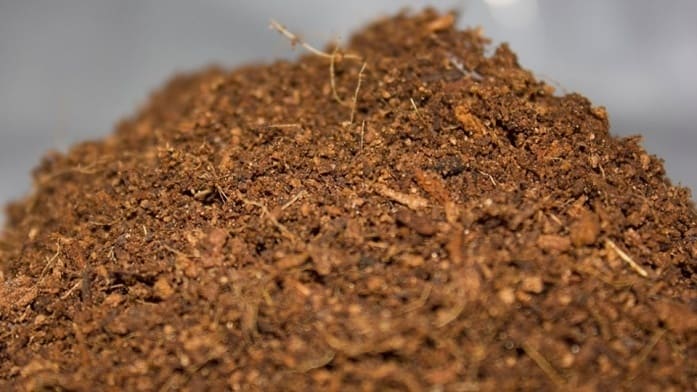
This material is taken from the husks of the coconut. In some contexts, by large, it would be considered waste. But it works wonders in Hydroponics. It breaks down very slowly over a long period of time and will not interfere with the plant’s nutrient consumption. It has a good aeration capacity, retains moisture very well and has a neutral pH. The size of the particles in coco fibre is small and is largely different from that of coco chips.
Rock Wool

One of the most common growing media in Hydroponics, rock wool has been widely used. It is a non – degradable, sterile and porous material with a large limestone or granite composition that has been exposed to high heat and has been melted from which are later produced the end product i.e. the wool like material spun and arranged into sheets or cubes.
Its water absorbing capacity is very high and at some point may become too much for your plants. See to it that your plants don’t get too much water due to this because it will lead to many plant issues such as root or stem rot. Its pH level may not be balanced which is why it should be done and can be done by using pH balanced water.
Starter Plugs
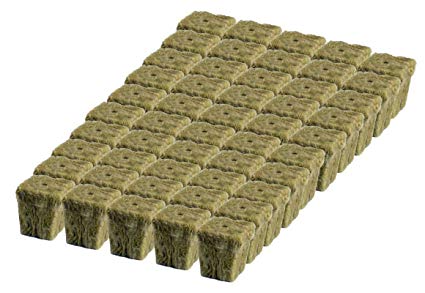
It constitutes organic compost and does not easily break down because of its binding material that is bio – degradable. They are very convenient to grow seedlings in the earlier stages and are quite simple to manage. Its compact design is of great help. However, it is not inexpensive and will require quite an investment.
Pumice

It is vastly used across many fields. It is a mineral that is of light weight. It has to be crushed and then placed in the plant holes for using in Hydroponics. Be sure to wash the stones first so as to sanitize them and then use them in your Hydroponics system. It has a high capacity of retaining oxygen that can be very beneficial to your plants. Because of their lightweight, they may float in water if pumice of a smaller size is used so be sure to buy larger pumice stones or mix them with another growing medium t help with the weight and aeration.
Gravel

Gravel is not an uncommon material. You will have seen it used many times in aquariums and gardens or paths in backyards. It can also be used in Hydroponics. Be sure to wash it first and then sanitize it before use. It is a material that does not cost much and can easily be cleaned for your use. Because it is not expensive, you can use it if you are just starting out and only want to experiment.
It has a great draining capacity which will prevent the plants from being saturated. However, too much may lead to dry roots. It is also a heavy material so make sure to buy a smaller size. It is, however, not suitable for all types of Hydroponic set – ups.
Brick Shards
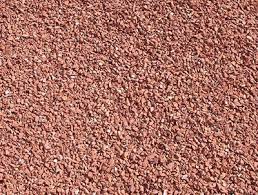
It’s not an uncomplicated material. It’s only brick crushed into smaller particles. It shares similar properties to gravel. But because this material does not have a neutral pH level, they may have a hard time in controlling the pH level. You cannot use it directly. First you will have to clean it and sanitize it to get rid of the brick dust and then use it or your plants. It has a good draining action, can be easily cleaned and is cheap. It may become a heavy material to use and its draining may dry out the roots.
Polystyrene Packing Peanuts
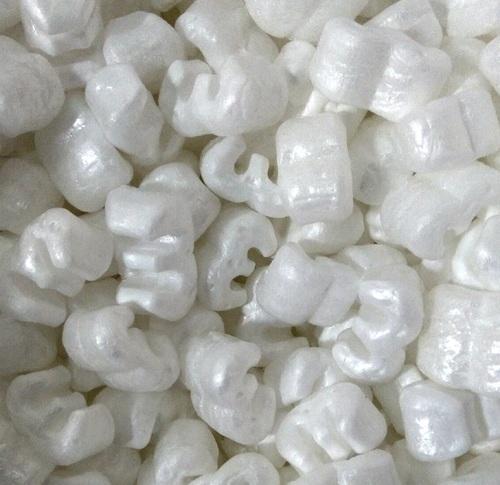
You may have though they’re used only for packing purposes, but no. They can also be used in Hydroponics. They are easily available, inexpensive and have good draining action. Because of its lightweight, it may cause a few problems but they can be solved by mixing another growing medium to it. However, it may not be suitable to all plants, because a few may stand chances of being contaminated by the styrene in the material. Do not use the bio – degradable ones because they will easily turn to mush.
Wood Fibre
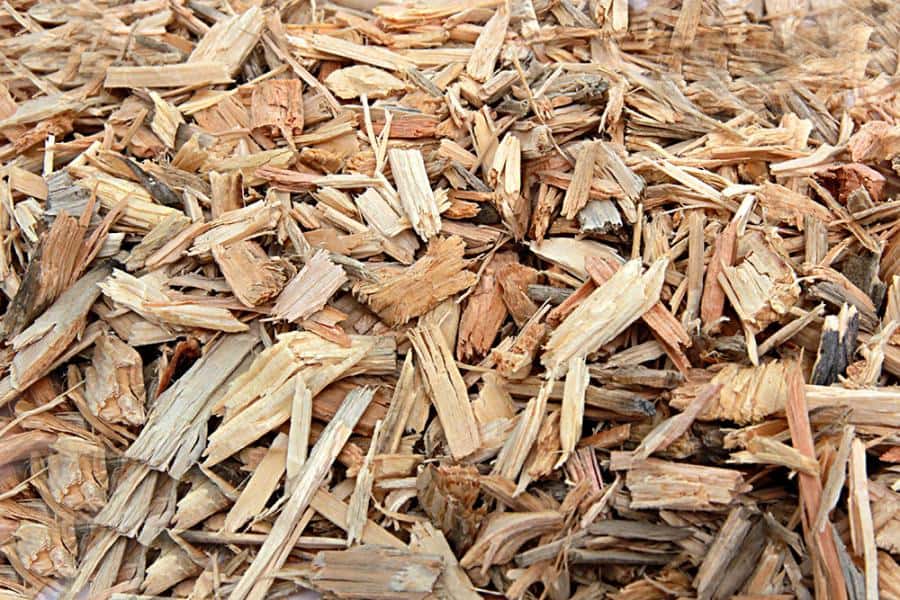
It is only wood, but broken into small shards for various use. It is an organic material through and through. This has good water absorption ability and can drain very well. But keep an eye on it in case it becomes too much. It may decrease the effect of the plant regulators in the plant which will cause a slightly bigger growth in them. It won’t break down easily or quickly. But it is bio – degradable and will decompose and can also act as a light beam to certain pests. Washing them is essential because it may prove to be a very unsterile material.
Which medium should I choose to use?
There are many factors that contribute to the kind of growing medium you choose. Any one medium cannot be labelled as ‘the best’. Each of them has their own properties and most of them share the same kind of properties.
And in some case, a few growing media’s lack of a certain property can be compensated by mixing it with another media which will negate that lack. Over time, gardeners develop their preference for one kind of material based on their experience; it is mostly a trial and error process. But the type of Hydroponic system you use also makes a difference.
Some media do not agree with all types of systems and some work really well with only a few; so this is something you can take into consideration while choosing your medium. Every growing media’s purpose is more or less, the same: the roots need to be protected from saturation and must be supplied with just the right amount of oxygen and nutrients.
So if the plant is compatible with a certain medium, then go for it. It also depends upon the plants that you are growing as all plants will not be compatible with all media. Taking all these factors into consideration, make your choice carefully. There are rare chances of your chosen media not working out, but if it doesn’t, then you can always move onto the next!
Hydroponics, if dealt with correctly, can be a stress releasing hobby that you can pursue to keep yourself at peace and your garden full. It is not a very hard method to follow through on and can simply be done by anyone willing to spare some time.
A Hydroponic set – up is easy to compile and build and requires very few major materials, one of which is the type of growing medium. It’s not a very confusing material to decide upon, but if you find it to be so, then we hope our article has resolved, if not all, then a reasonable amount of your queries. So review it, and take our pick!
